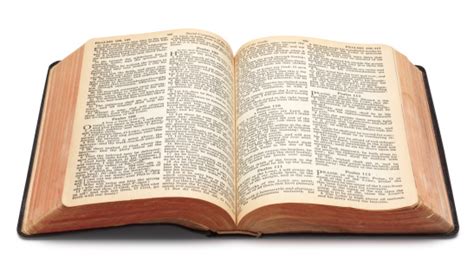Well, you seem to be all over the place, but its the historic timeline right straight through if you study it thoroughly. As for some scholarly works, I came across this study that you might like, which goes over some key points of arguments against Antiochus N Epiphanes as the Little Horn power and the meaning itself, which is a good in depth explanation in the "Selected Studies on Prophetic Interpretation" by Professor William H. Shea.
https://www.adventistbiblicalresearch.org/wp-content/uploads/selected_studies_on_prophetic1.pdf
Is the word "horn" used to denote a king or a kingdom in the book of Daniel?
Dan 7:24. The ten horns are ten kings who shall arise from this kingdom. And another shall arise after them; he shall be different from the first ones and shall subdue three kings.
The ten horns are not just kings but are smaller kings to the previous four kingdoms in Dan 7:17. Those great beasts, which are four are four kings who arise out of the earth. Fx. Babylon, Medo-Persian, Greece and Rome.
Dan 2:37.38. You O king – are the head of gold. (King Nebuchadnezzar of Babylon).
Dan 2:39. But after you shall arise another kingdom. (Medo-Persian).
Dan 2:40. Fourth kingdom.
Dan 2:41. Feet and toes. The kingdom shall be divided.
Dan 2:44. And in the days of these kings the God of heaven will set up a kingdom – it shall break in pieces and consume all these kingdoms.
Dan 8:20. The ram which you saw, having the two horns – they are the kings of Media and Persia.
Dan 8:22. As for the broken horn and the four that stood up in its place, four kingdoms shall arise out of that nation, but not with its power.
Dan 8:23. And in the latter time of their (four horns) kingdom – – – a king shall arise. (Little horn).
Conclusion
Horns, kings and kingdoms can be used to mean the same in the book of Daniel. So the little horn is a kingdom in the book of Daniel. The papacy is both a political and a religious kingdom, which makes it different. Antiochus IV was only one king and not a kingdom. He was one of the twenty rulers of the Seleucid dynasty ruling that kingdom.
The greatness of the little horn.
Dan 8:4. The Persian ram magnified himself.
Dan 8:8. The Grecian goat magnified himself. Exceedingly.
Dan 8:9.11. The little horn magnified himself exceedingly in different directions. Toward the south, toward the east, and towards the glorious land. He even exalted himself as high as the Prince of the Host.
Antiochus IV should have exceeded the Persian and Greek Empires in greatness. This is not the case, since he ruled only one portion of the Grecian Empire with but little success.
"To the glorious land." Antiochus IV is noted in 1 Maccabees 1-6 as the Seleucid ruler who desecrated the temple and persecuted the Jews. This did not occur because of any conquest of his own, but because Antiochus III had already taken Palestine away from the Ptolemies in 198 B.C.
Dan 8:11. He even exalted himself as high as the Prince of Host; and by him the daily were taken away, and the place of His sanctuary was cast down.
Antiochus IV took away the daily. But it does not fit in with Antiochus IV that he cast the sanctuary to the ground.
Mákon in Hebrew is used seven times for the place of God´s dwelling place in heaven, six times for the place of His earthly dwelling, and twice for the place of His throne in a metaphorical sense.
The Romans cast the sanctuary down to the ground in A.D. 70. But Antiochus IV never did anything to the temple which would qualify as "casting down it´s mákon," or "place." Desecrate it he did; but, as far as is known, he did not damage it architecture in any significant way.
Dan 8:23. And in the latter time of their kingdom, when the transgressors have reached their fullness, a king shall arise – – -.
The Seleucid dynasty consisted of a line of more than 20 kings who ruled from 311 to 65 B.C. Antiochus IV was the eight in line, and he ruled from 175 to 164/63 B.C. Since more than a dozen Seleucids ruled after him and fewer than a dozen ruled before him, he can hardly be said to have arisen "at the latter time of their kingdom."
Dan 8:19. And he said, "Look, I am making known to you what shall happen in the latter time of the indignation; for at the appointed time of the end shall be.
When is the appointed time of the end?
Daniel´s time prophecies had to extend to the time of the Messiah in the first century. Dan 9:24-27. The time of the end could only arrive after the fulfilment of this prophecy. Therefore, Antiochus IV who died in 164/3 B.C. cannot be placed at the time of the end because he lived before the Messiah came to this earth.
The nature of the "end of the little horn." Dan 8:25. He (little horn) shall be broken but by no human hands.
This sentence is similar to the one in Dan 11:45 he shall come to his end, with no one to help him. The little horn shall come to its end, not by human hands but by God. Dan 7:9-11. The end of the little horn came about by a decision from God in the heavenly court. Antiochus IV did not fulfil this prediction, because he died of natural causes and not in battle.
Origin of the little horn. Did it come from the four horns of the Grecian Empire after Alexander or did it come from the four winds of heaven?
Dan 8:8.9. Therefore, the male goat grew very great; but when he became strong the large horn was broken, and in place of it there came four notable conspicuous horns towards the four winds of heaven. Out of one of them came a little horn.
What does the plural word "them" refer to?
Does it refer to four winds or four horns?
The word for "them" in the Hebrew is "hem" and is masculine. The antecedent is "winds" in verse 8 and not horns, since "winds" may be either masculine or feminine, but "horns" only feminine.
The gender of the first two elements in verse 9 (one/them) lines up perfectly with the gender of the last two elements at the end of the verse 8 (winds/heaven). The antecedent of "them" in the phrase "from them" is neither winds nor horns but heavens. Therefore, the little horn comes from the four winds of heaven and not from the four horns.'
I have seen how many people dont understand the 'little horn' in Daniel 8 and how it is the same as in Daniel 7, but the little horn of Daniel 8 represents the Roman Empire as a whole, while the little horn of Daniel 7 represents the Roman Empire only under one phase, the whole empire being represented by the fourth beast, of which the little horn was only a part, so kind of confusing to say the least.

